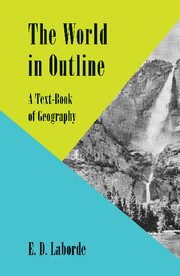Summary
SOUTH America and North America together form the New World, a name formerly appropriate to these continents not so much because of their late discovery, but in order to emphasise the immense differences in climate, plant and animal life, and the conditions of human existence between the ‘new’ continents and the regions with which the European discoverers were familiar. The two great land masses are joined by the Isthmus of Panama, the real geological boundary being marked by the valleys of the Atrato and San Juan Rivers which separate the northern Andes from the ranges of Central America. Eastwards, the bulge of South America in Brazil approaches to within 1800 miles of the west coast of Africa.
Position and Size. About one-fourth of South America lies in the northern hemisphere, the Equator passing through the continent at the mouth of the Amazon, and the 60th meridian of west longitude running nearly midway from north to south. The mainland stretches from 12° N. to 56° S. Lat. It is roughly pear-shaped with a length of 4800 miles and a breadth of 3200. Its area measures some 7 million square miles, or 2½ times as large as Australia and 56 times as big as the British Isles. The portion outside the hot belt tapers to a point and is rather less than a third the size of the area within the Tropics.
South America has often been compared with North America and Africa. With the former it has many points of likeness. Both continents are strikingly similar in shape, have a backbone of fold mountains on the extreme west, with little or no Pacific coastal lowlands, and as a consequence an outlook towards the Atlantic. In both, also, the presence of old, worn highlands on the east concentrates the drainage of wide central plains into three great river systems. But important differences exist, all of which tend to give greater importance to North America. While South America tapers away from the Equator, North America tapers towards it. Hence, most of the northern continent lies within the temperate belt—a fact of supreme importance— and the broad northern end approaches Asia and Europe. The last feature would have been of great historical import had the eleventh-century voyages of the Northmen been followed up.
- Type
- Chapter
- Information
- The World in OutlineA Text-Book of Geography, pp. 340 - 353Publisher: Cambridge University PressPrint publication year: 2013



